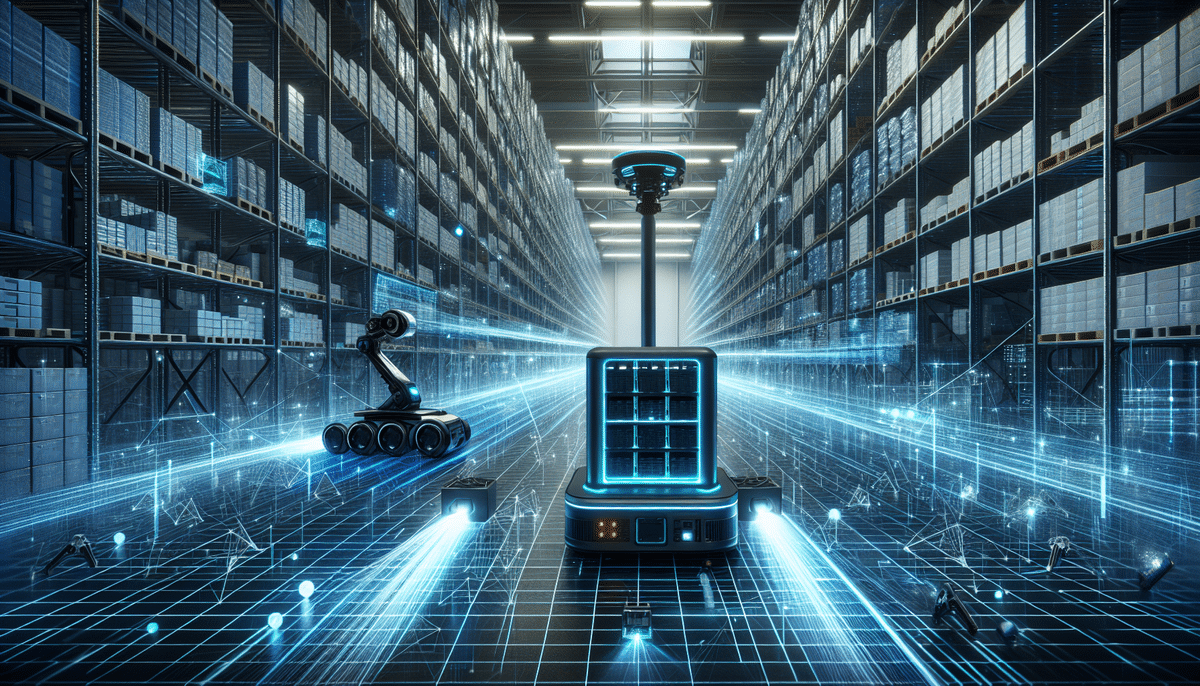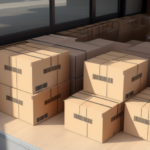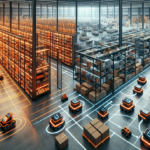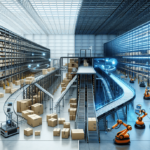Introduction to Automated Warehousing
Automated warehousing leverages advanced technologies to facilitate the storage, movement, and retrieval of goods within a warehouse or distribution center. The primary objectives are to streamline operations, reduce manual intervention, minimize errors, and enhance the speed and accuracy of order processing. Automated Storage and Retrieval Systems (AS/RS) integrate machines, software, and controls to automate material handling, significantly reducing the need for human intervention.
AutoStore vs GreyOrange: An Overview
Automated warehousing is rapidly gaining popularity among businesses due to its ability to increase efficiency, reduce operational costs, and enhance overall productivity. In this comprehensive comparison, we analyze two leading AS/RS solutions—AutoStore and GreyOrange—to help you make an informed decision on which system best fits your business needs.
Understanding AutoStore
AutoStore utilizes a cube-based storage system with bins stacked in a grid structure, maximizing vertical space and achieving high storage density. This system is best suited for uniform items due to its grid-based storage.
Understanding GreyOrange
GreyOrange employs a shelving-based system with movable shelves on tracks, offering greater flexibility for varying item sizes and weights. This makes GreyOrange more adaptable to diverse product ranges, suitable for businesses with varied inventory.
Key Features and Capabilities
Storage Density
- AutoStore: Maximizes storage density through its cube-based system, allowing for higher storage capacity in limited spaces.
- GreyOrange: Offers flexibility with movable shelves, accommodating a wide range of item sizes and weights.
System Flexibility
- AutoStore: Ideal for businesses with uniform inventory, enhancing efficiency and space utilization.
- GreyOrange: Suited for varied inventory, providing adaptability to different storage requirements.
Scalability
- AutoStore: Features a modular design, allowing businesses to expand storage capacity by adding more robots and trays as needed.
- GreyOrange: Utilizes customizable systems that can be tailored to both small and large warehouses, offering flexibility for future growth.
Performance Metrics and Efficiency
Performance metrics are crucial in determining the efficiency of AS/RS solutions. Both AutoStore and GreyOrange offer robust performance, but they differ in specific areas:
- Throughput Capacity:
- AutoStore: Capable of handling approximately 500 storage and retrieval cycles per hour with a single robot.
- GreyOrange: Can manage up to 2,000 cycles per hour with up to four robots, making it ideal for larger operations.
- Accuracy:
- AutoStore: Boasts a 99.9% accuracy rate in item picking and storage.
- GreyOrange: Offers a 99.5% accuracy rate, suitable for industries with stringent quality control standards.
- Real-Time Tracking: Both systems provide real-time inventory tracking. AutoStore offers more detailed analytics, while GreyOrange emphasizes user-friendly interfaces.
Integration and Interoperability
Seamless integration with existing systems is essential for effective warehouse operations:
- AutoStore: Features a proprietary software platform that integrates easily with various Warehouse Management Systems (WMS) and hardware systems like conveyor belts and Automated Guided Vehicles (AGVs), providing a versatile automation solution.
- GreyOrange: Focuses on software integrations but may require customization for hardware system compatibility, offering flexibility primarily within its software ecosystem.
For businesses utilizing multiple software solutions, AutoStore’s extensive integration capabilities make it a more suitable choice.
Cost Comparison and Value for Money
Cost is a significant factor when choosing between AutoStore and GreyOrange:
- Initial Costs: AutoStore tends to be more expensive upfront due to its advanced storage density features.
- Total Cost of Ownership: GreyOrange may offer better long-term value by reducing maintenance costs and minimizing downtime.
- Scalability Costs: While both systems are scalable, scaling AutoStore could be higher due to additional hardware requirements, whereas GreyOrange’s modular approach may offer more cost-effective expansion.
Ultimately, the best value depends on the specific operational needs and growth projections of your business.
Real-World Case Studies
Successful implementations of AutoStore and GreyOrange demonstrate their practical benefits:
- Best Buy Canada: Implemented AutoStore, resulting in a 20% increase in order processing speed and a significant reduction in manual interventions, enhancing overall efficiency.
- Kerry Logistics: Adopted GreyOrange solutions to manage over 1.3 million shipments per month, achieving a 30% reduction in operational costs.
These case studies highlight how both systems can drive substantial improvements in different operational contexts.
Implementation Challenges and Solutions
While both AutoStore and GreyOrange offer significant advantages, their implementation can present challenges:
- Employee Training: Extensive training is required to ensure staff can effectively operate and maintain the new systems.
- Warehouse Layout Changes: Existing layouts may need to be reconfigured to accommodate the automated systems, which can be time-consuming and disruptive.
- Operational Disruptions: The installation process may cause temporary disruptions to ongoing warehouse operations, necessitating careful planning and scheduling.
Proper planning and management are essential to mitigate these challenges and ensure a smooth transition to automated warehousing.
Future Trends in Automated Warehousing
The automated warehousing industry is evolving with advancements in robotic technologies, AI, and integration capabilities:
- Robotic Advancements: Enhanced robots with better dexterity and intelligence will further improve the efficiency of AS/RS systems.
- AI and Machine Learning: These technologies will enable more predictive and adaptive systems, improving inventory management and order fulfillment.
- Integration with IoT: Greater connectivity between devices and systems will provide more comprehensive data analytics and operational insights.
AutoStore and GreyOrange are at the forefront of these trends, continuously innovating to offer more efficient and intelligent solutions. Businesses adopting these systems will be well-positioned to leverage future advancements in warehousing technology.
Choosing the Right Automated Warehousing Solution for Your Business
Selecting the appropriate AS/RS solution requires careful consideration of various factors:
- Operational Requirements: Assess the specific needs of your warehouse, including inventory volume, item variety, and order processing speed.
- Budget: Evaluate both initial and long-term costs associated with each solution.
- Scalability: Consider your growth projections and whether the system can accommodate future expansion.
- Integration: Ensure the system can seamlessly integrate with your existing technologies and workflows.
- Support and Maintenance: Look for solutions that offer comprehensive support and easy maintenance options.
Both AutoStore and GreyOrange offer robust AS/RS solutions, but the best choice depends on aligning these factors with your business goals.
Conclusion: Which Solution is Right for You?
Choosing between AutoStore and GreyOrange involves evaluating your warehouse’s size, operational complexity, budget, and long-term objectives. AutoStore is ideal for businesses seeking high throughput rates and superior storage density, making it suitable for large-scale operations with uniform inventory. In contrast, GreyOrange offers greater scalability and flexibility, catering to businesses that prioritize adaptability and cost-efficiency.
Regardless of the choice, implementing an AS/RS system like AutoStore or GreyOrange can lead to significant improvements in efficiency, accuracy, and overall warehouse performance.
For more information on automated warehousing solutions, visit authoritative resources such as the World Logistics or the Supply Chain Digital.




















